What is Osteoarthritis?
Arthritis is a chronic, activity-limiting condition affecting the knee and other large joints. There are at least 100 different types of arthritis. Osteoarthritis, Traumatic Arthritis and Rheumatoid Arthritis are three common types of arthritis.

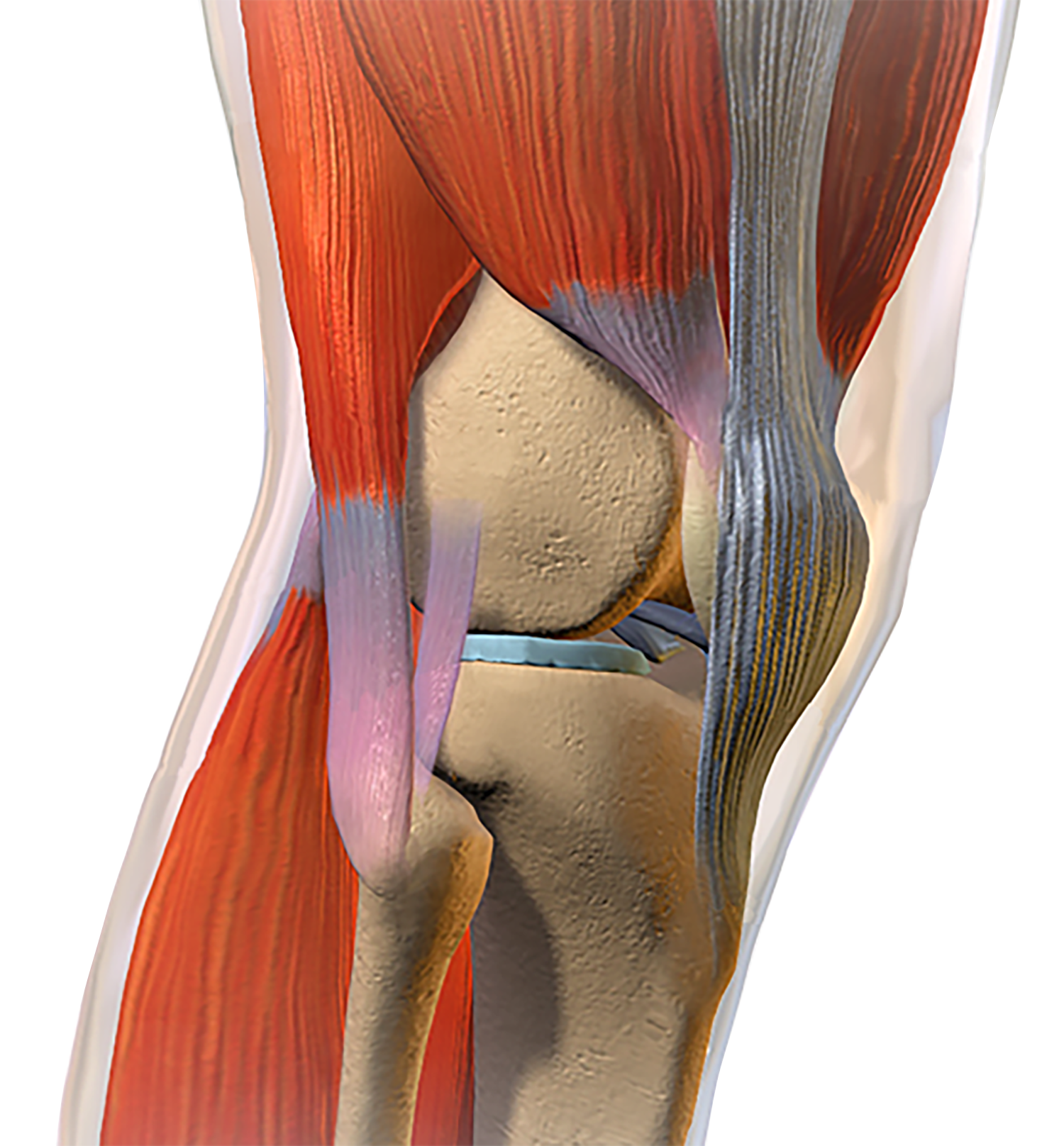
What Is Osteoarthritis?

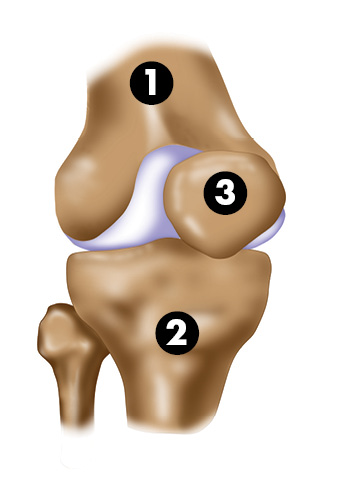
Your knee joint is formed by the intersection of:

1- The Femur

2- The Tibia

3- The Patella
Types of Osteoarthritis
Arthritis is a chronic, activity-limiting condition affecting the knee and other large joints.
There are at least 100 different types of arthritis. Osteoarthritis, Traumatic Arthritis and Rheumatoid Arthritis are three common types of arthritis.


Traumatic Arthritis occurs secondary to a joint injury or other trauma. Cartilage is degraded and underlying joint damage can occur, even years after the original injury.


Rheumatoid Arthritis is an autoimmune condition in which the immune system attacks a person’s own organs and joints. It occurs throughout the entire body and can present at any age. The immune system attacks the synovial lining of the joint, resulting in significant inflammation and joint damage.


Sometimes called degenerative joint disease or degenerative arthritis, Osteoarthritis (OA) is the principal condition that leads to joint replacement surgery. Osteoarthritis is a degenerative joint disease characterized by the breakdown of the cartilage that protects and cushions key joints in the body, including the knees, hips and shoulders. This causes the bones in the affected joint to rub against each other, which can result in significant and chronic joint pain, stiffness, swelling, numbness, loss of flexibility and loss of motor function. The pain of osteoarthritis, even during the early stages of the disease, can be overwhelming for patients and can have significant physical, psychological, quality of life and financial implications. In healthy joints, cartilage is like a cushion that covers the end of each bone, providing a smooth, gliding surface for joint motion.
As OA worsens over time, bones may break down and develop growths called spurs. Bits of bone or cartilage may chip off and float around in the joint. In the body, an inflammatory process occurs and cytokines (proteins) and enzymes develop that further damage the cartilage.
In the final stages of OA, the cartilage wears away and bone rubs against bone, leading to joint damage and more pain. In some cases, it also causes reduced function and disability; some people are no longer able to do daily tasks or work.
Osteoarthritis can be located in different compartments of the knee:
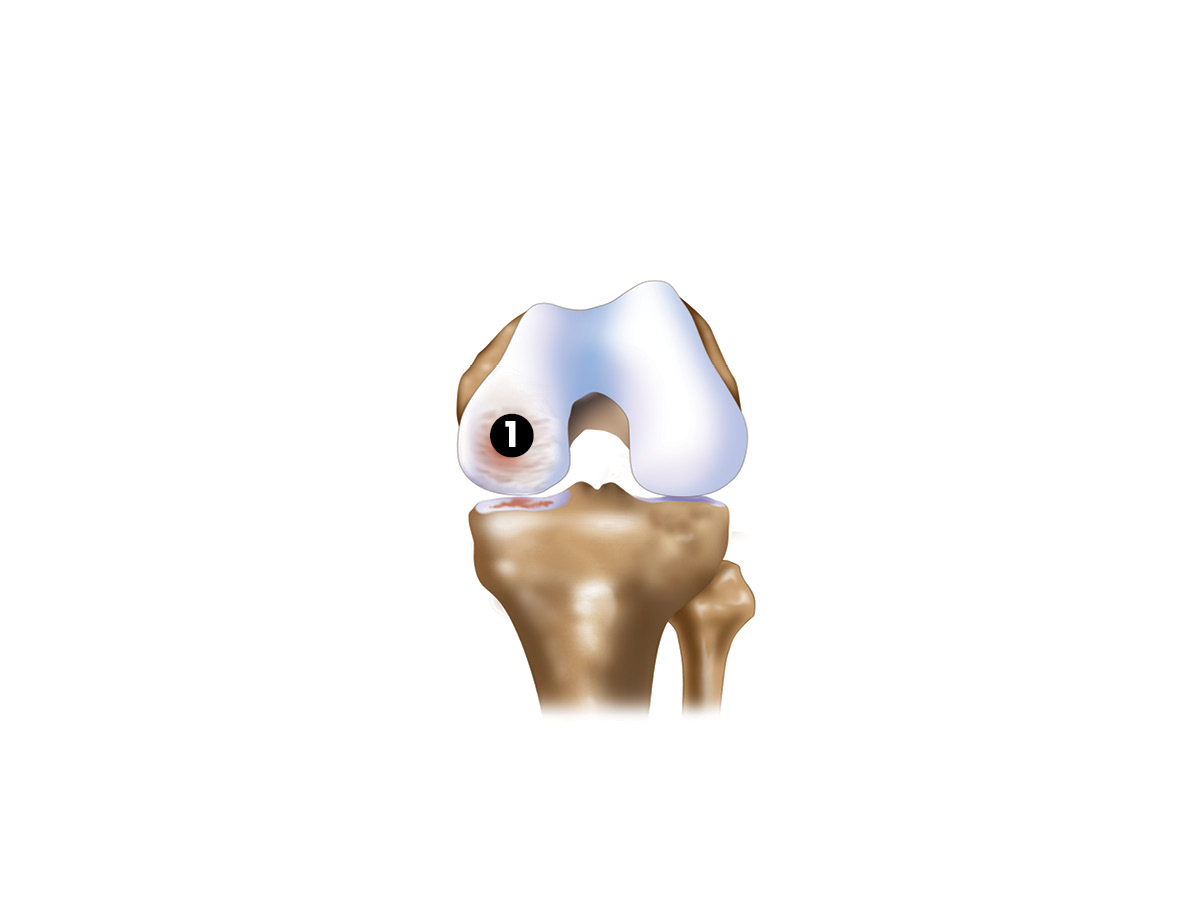
Unicompartmental OA
It affects only one compartment, the medial compartment (1).
Bicompartmental OA
It affects two compartments, the medial (1) and patellofemoral (2) compartments.
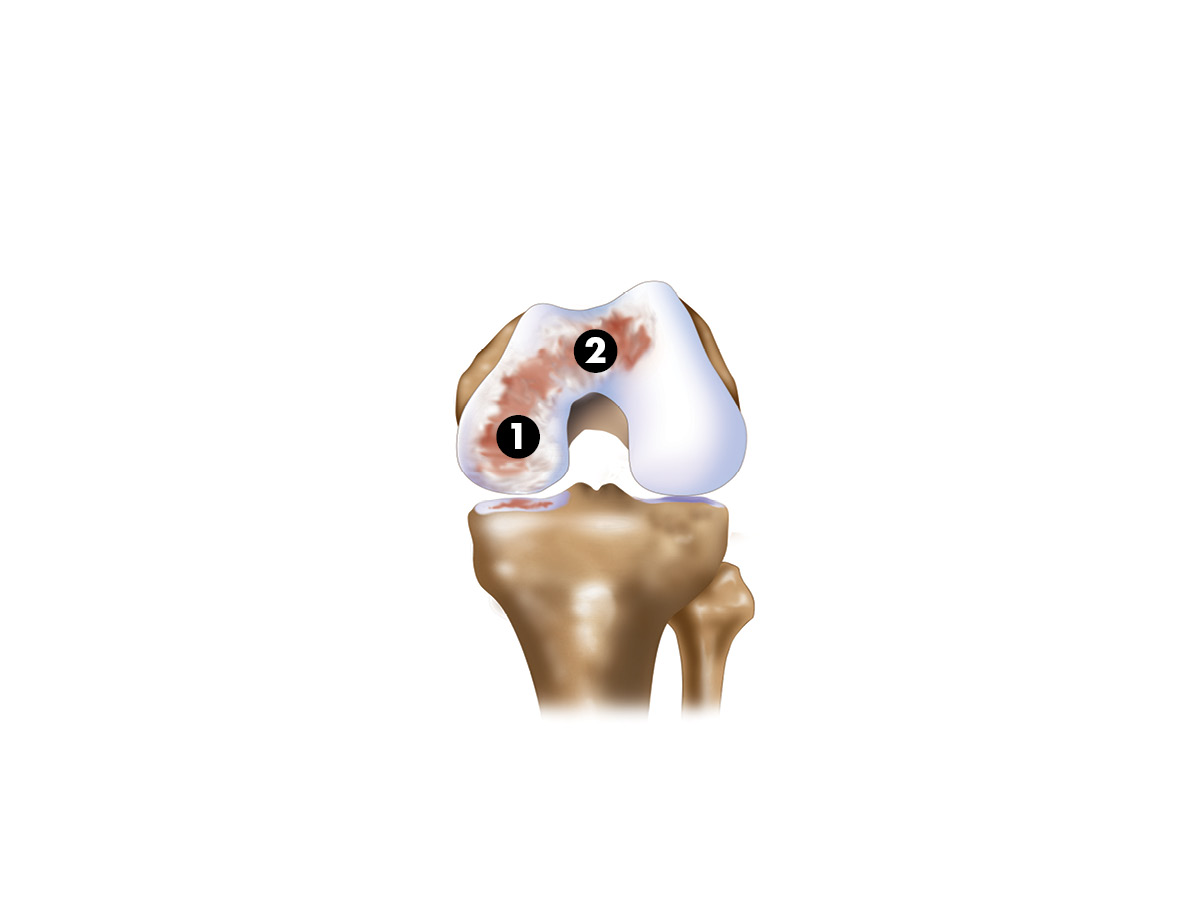
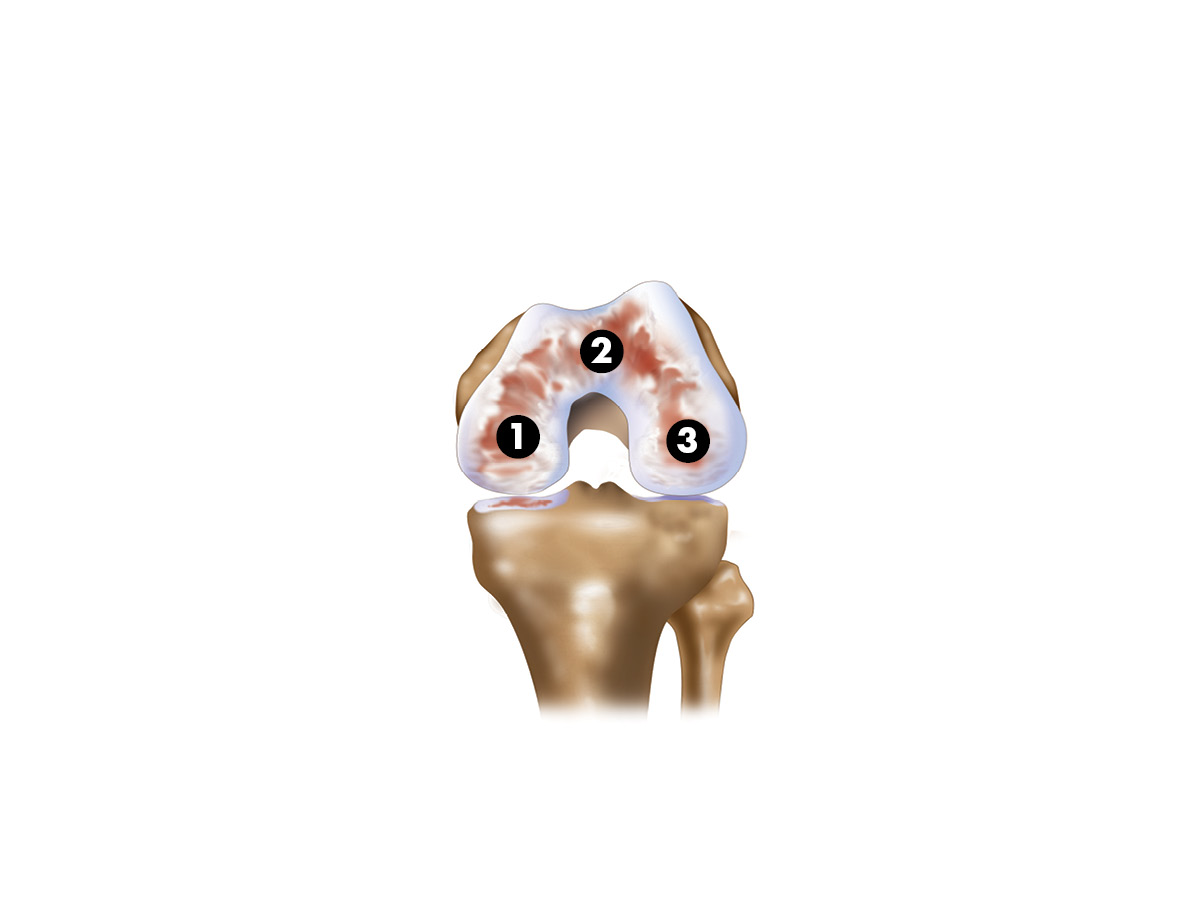
Tricompartmental OA
It affects all three compartments, the medial (1), patellofemoral (2) and lateral (3) compartments.
Osteoarthritis Treatment Options
Non-Surgical Treatment Options
Before opting for a knee replacement, partial or total, you can explore several treatments options to relieve the pain associated with osteoarthritis such as medications, therapy or injections.


Acetaminophen
Acetaminophen (Tylenol) is used for pain management in patients with mild to moderate osteoarthritis discomfort. It does not treat the disease, but helps to retrieve pain.
NSAIDs
Nonsteroidal anti-inflammatories (NSAIDs) can be used to manage pain and reduce inflammation associated with mild to moderate osteoarthritis.
Over-the-counter:
- Ibuprofen (Motrin, Advil)
- Naproxen sodium (Aleve)
By prescription:
- Arthrotec
- Celebrex
- and others
Duloxetine
Duloxetine hydrochloride (Cymbalta) is a mild anti-depressant that can be used to treat chronic pain, including musculoskeletal pain from osteoarthritis.


Physical Therapy
Physical therapy provides a patient with an individualized exercise program, used both in-office and at home, to strengthen joint-supporting muscles, improve balance, and relieve pain.
Occupational Therapy
Occupational therapy is focused on specific movements or activities required for a patient to perform daily life activities. Activities may include movements performed at work or home, such as lifting, bending, climbing stairs or using healthy posture.
Movement Therapy
Movement therapy consists of gentle, low-impact exercises such as yoga, tai chi, or stretching. These activities may reduce stress, relieve mild discomfort, and improve flexibility.


Cortisone
Cortisone is a corticosteroid medication that can be injected into the joint space to reduce inflammation and relieve pain. The frequency of these injections must be limited because the process may contribute to further joint damage.
Hyaluronic Acid
Osteoarthritis can result in loss of synovial fluid. Hyaluronic Acid is one component of the synovial fluid that lubricates and nourishes the knee and other joints. These are several types of hyaluronic acid injections, together known as viscosupplements.
Arthorcentesis
Arthrocentesis is aspiration (removal) of excess fluid around the joint. This may relieve pain and inflammation. Arthrocentesis can also be performed prior to cortisone or hyaluronic acid injection.
Surgical Treatment Options
If other treatments are no longer sufficient to relieve your pain, you can discuss with your doctor the surgical options to improve the condition of your knee joint.


Osteotomy is a surgical joint realignment procedure used to correct a mild Varus deformity. A wedge of bone is removed, normally from the tibia. This mechanically re-aligns the knee to more effectively distribute the load across the condylar joint surface, preserving thinning articular cartilage.


When arthritis is isolated to a single compartment (unicompartmental), a partial knee replacement (PKR) is often elected.
Advantages over TKR include less blood loss, more normal knee function, and quicker recovery, but patient selection is important.
Ideal candidates have a normal BMI, mild deformity with functioning cruciate ligaments, and good pre-operative range of motion (ROM).


Total knee replacement (TKR) reconstructs all three compartments of the knee. A detailed series of bone resections are performed to align the joint with the mechanical axis of the lower limb and resurface the articular surfaces of the femorotibial compartments and the patellofemoral joint.
Frequently Asked Questions
Get answers to frequently asked questions about knee & hip replacement recovery time, and more from Conformis.
